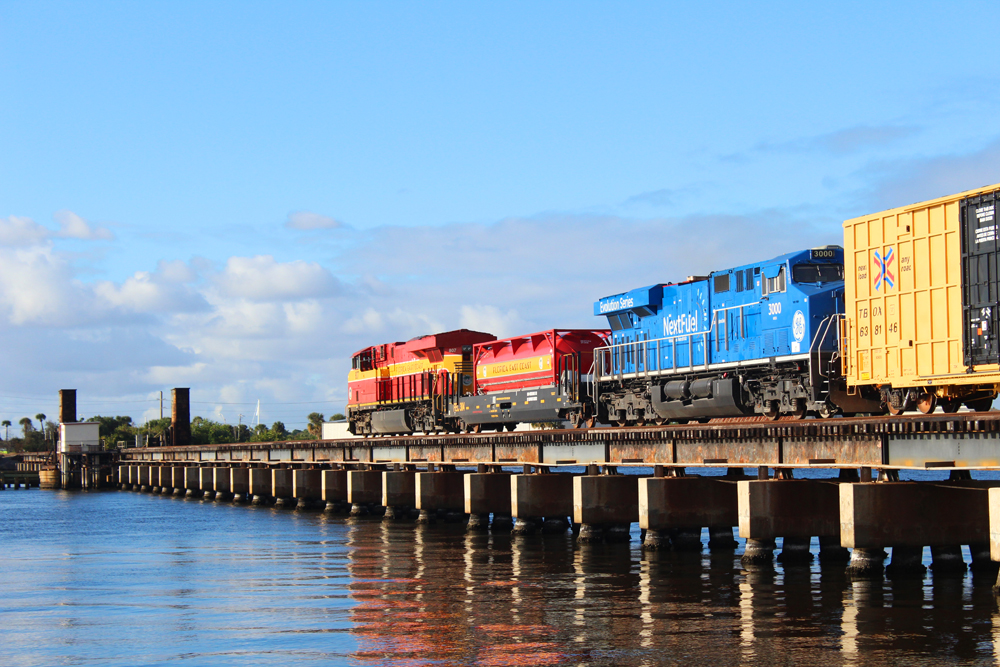
STUART, Fla. — The U.S. Coast Guard has issued new rules for a Florida East Coast Railway drawbridge, removing a requirement to open the bridge for up to 15 minutes twice each daylight hour and striking a compromise between boating and rail traffic.
The change is crucial for the planned start of Brightline passenger service between South Florida and Orlando in September.
The revised “temporary deviation,” effective Aug. 15, strikes the current rule requiring opening the single-track bridge across the Okeechobee Waterway of the St. Lucie River at Stuart to marine traffic at 15 and 45 minutes past each hour, and remaining open for up to 15 minutes. That plan gave boaters priority without regard to movement of long FEC freights or the schedules of 16 daily Brightline passenger round trips set to begin crossing the bridge next month [see “Coast Guard bridge plan ignores practices elsewhere …,” Trains News Wire, June 18, 2023].
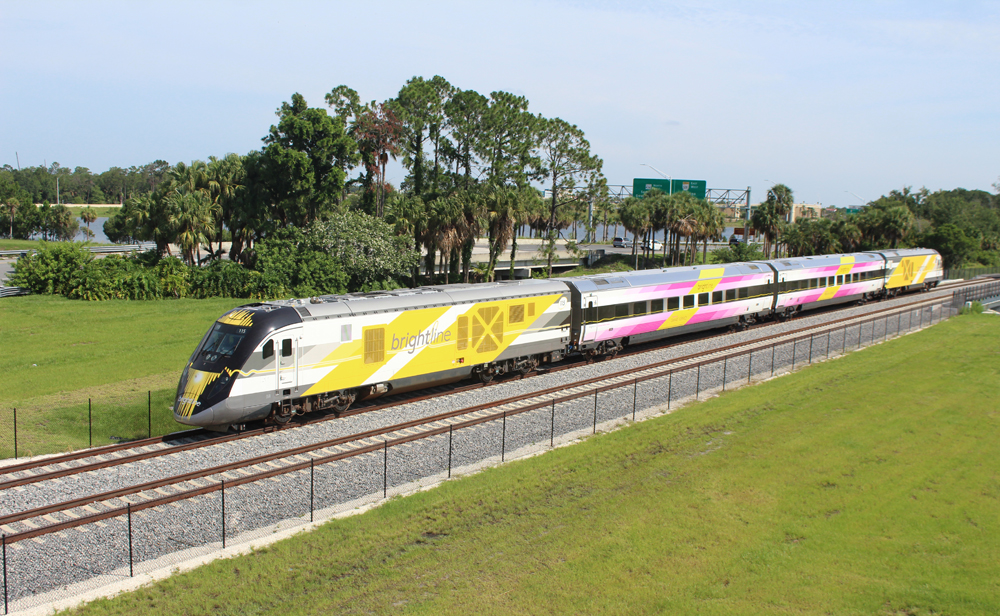
The new arrangement accounts for the twice-hourly passage of Brightline trains, whose crossing times at Stuart are driven in part by the need to avoid conflicts on the 125-mph, single-track segment between the FEC main line at Cocoa, Fla., and a point where double tracks begin east of the Orlando International Airport. The rest of the route south of Cocoa to West Palm Beach was double-tracked and equipped with positive train control for 110-mph top speeds over the last four years.
A long-term solution at Stuart is likely to involve a second rail bridge to eliminate the short single-track segment.
“The new temporary deviation is the result of several parties working together for the good of the region and the good of the state,” FEC and Brightline said in a joint statement to News Wire. “Ultimately, the revision will allow mariners to have more than equal access to the waterway while allowing for successful movement of passenger and freight trains. We’re already working with federal, state and local partners to accelerate the schedule for a new bridge.”
The new conditions, published in the Federal Register today (Friday, Aug. 11), maintain predictability by providing a 10-minute period for boaters at the top of each hour between 6 a.m. and 10 p.m. An additional 5 minutes of navigational time is added at 8:55 a.m. Monday through Sunday and at 9:55 a.m., 10:55 a.m., 12:55 p.m., and 4:55 p.m. weekends.
The bridge will normally be open if there is no rail activity. But it may close for trains and remain closed for as long as 50 consecutive minutes as long as it can raise for the specified windows. Overnight, between 10 p.m. and 6 a.m., the closure maximum increases to 1 hour.
Personnel making dispatching decisions at DispatchCo, the independent company owned jointly by FEC and Brightline, need to be able to expedite passenger trains across the single track at Stuart to maintain schedules while adjusting freight operations so the long, slower freights don’t converge either when passenger trains are due or when the bridge is scheduled to be open. The new order mandates no more than a 5-minute delay for bridge openings if a train is approaching at a scheduled opening time.
Additionally, a bridge tender must be stationed at the bridge from 6 a.m. to 10 p.m. daily to provide estimated times of openings and closures; a mobile app and telephone line is required to furnish the same information 24 hours a day.
The new deviation order is in effect Aug. 15 to Dec. 17. It is considered temporary because it will be used to determine the long-term bridge operating rules. As in previous periods, the Coast Guard is encouraging public comments at https://www.regulations.gov. Commenters type USCG–2022–0222, in the search box and click “Search,” look for this document in the “Search Results” column, click on it, then click on the Comment option.






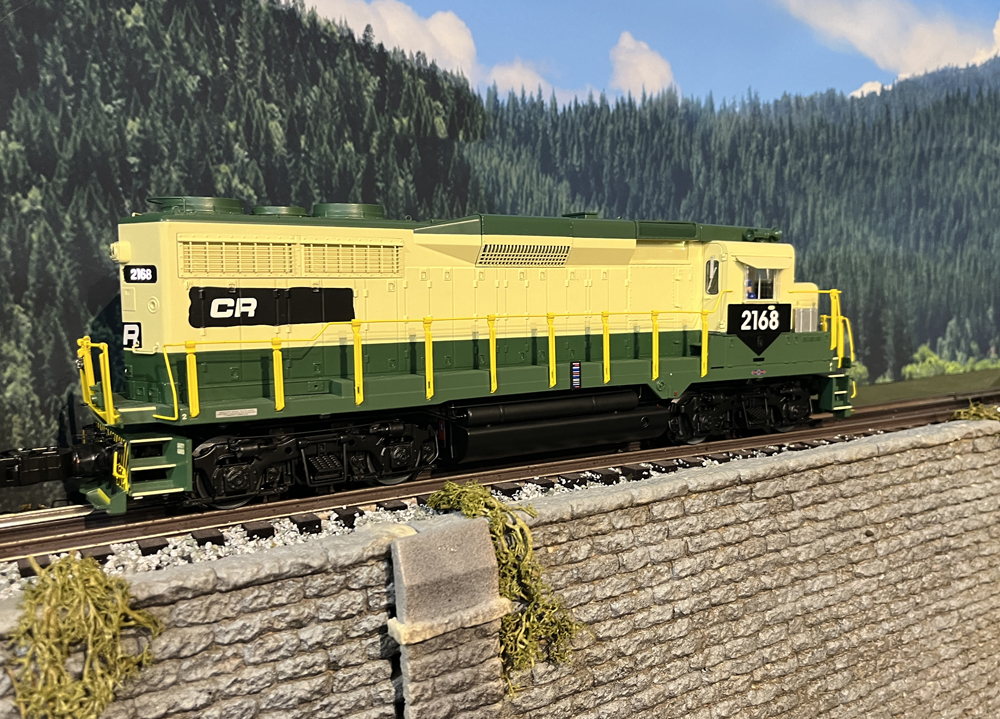
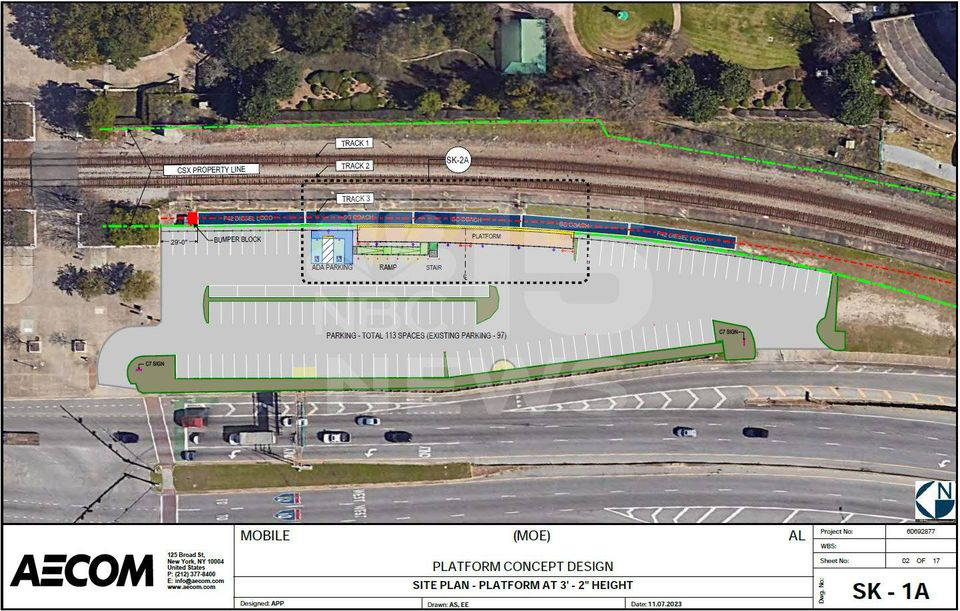
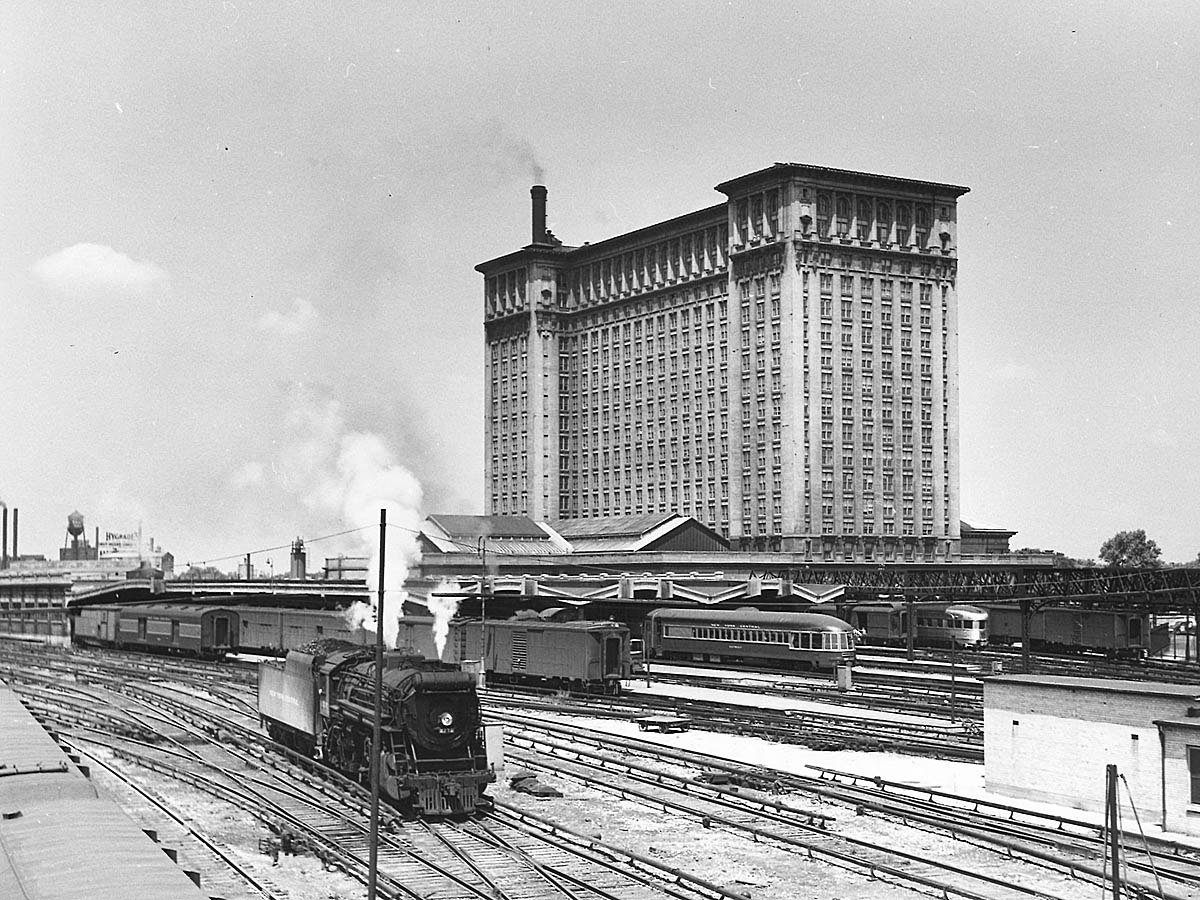
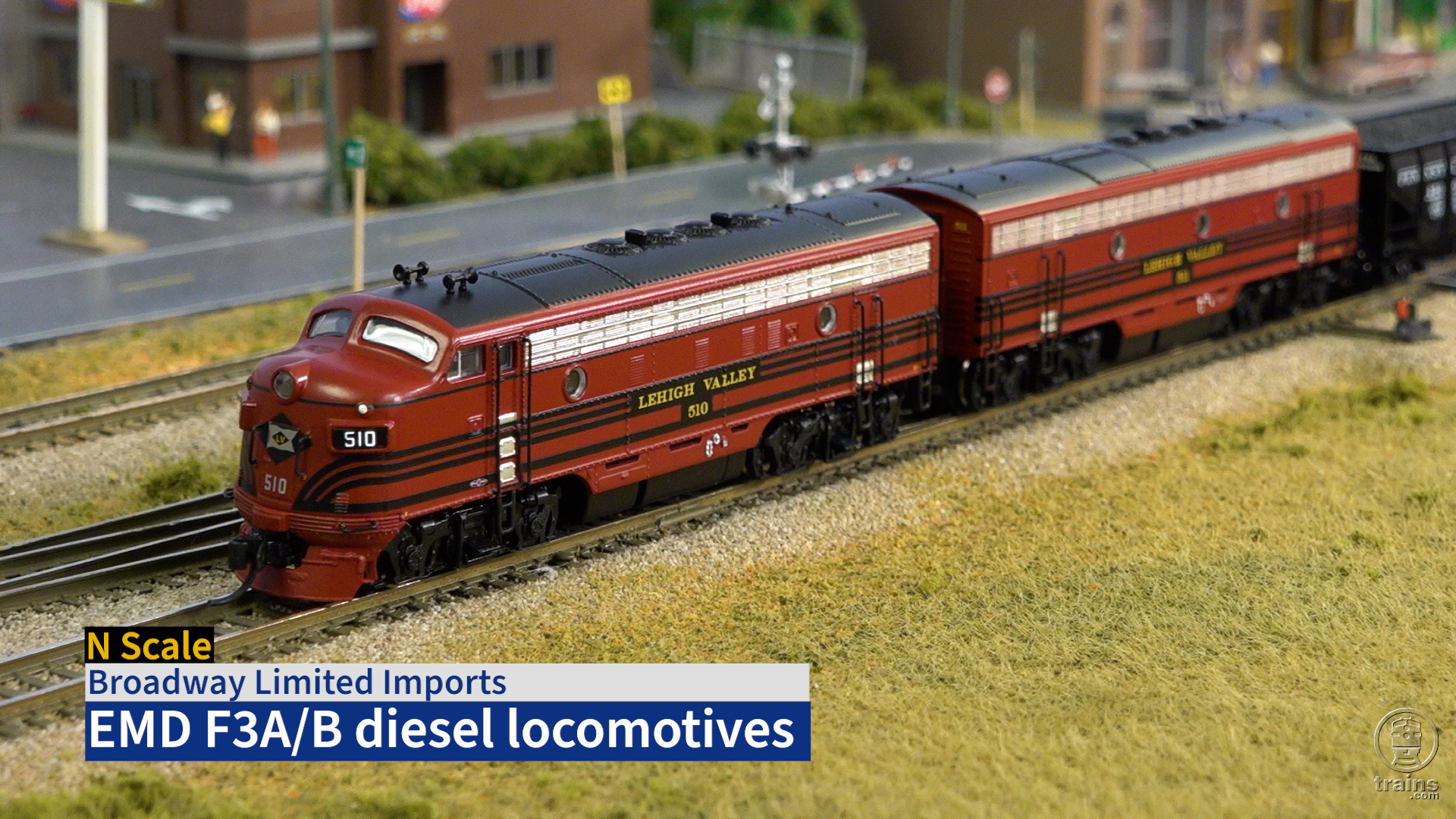




“We’re already working with federal, state and local partners to accelerate the schedule for a new bridge.”
Personally I think they should go for the tunnel. You have more control over the grades, they can run despite the weather, like high winds. It completely disarms everyone and the arguments for posterity.
Remember that this is Florida where even basements tend to be rare. Its possible that the terrain won’t allow for tunnels or at least tunnels that have to be high enough to handle freight.
@Steve Foster: Normally I would agree with you, but in the intervening years new techniques in creating under water tunnels have come a long way. Instead of using a traditional boring machine, in the event of high water tables, you trench the needed path and install pre-cast concrete sections with special self sealing joints. Once a complete path is in place, you evacuate the water from the tunnel, the joints seal, and you then place an aggregate over the new tunnel top which allows sea life to restore naturally.
A similar technology is being used today to tunnel the Denmark Strait. And while that is massively more expensive due to the scope and distance involved, a tunnel of this size would be much less expensive and just as straightforward as installing caissons for a new bridge.
In the Denmark example, the pre-cast section has everything included. The service tunnel, a section for fiber cable and signaling. Even tunnel cell service is accommodated. Perfect for Florida’s difficult geography. And I would surmise the grading to enter and exit would be easier for the trains to navigate as opposed to going “high” over the channel.
Either way (bridge or tunnel) will be expensive and take many years to build & complete. Got to get towns approval, get the needed right of way, do environmental impact study, pay/do wetlands remediation, and get permits. This would take a minimum of 3-5 years before they could turn the first shovel of dirt. A new bridge would also require a new alignment east of the US 1 bridge because of clearance problems under the US 1 bridge. Then they could build a rail bridge with enough clearance that wouldn’t need to open (Similar to the bridge L & N/CSX built across Pensacola Bay years ago, but double tracked). That would cost a minimum of $750 million these days, probably twice that amount with today’s inflation.
A tunnel would require a number of grade crossings to be closed. The trench on either end of the tunnel would probably be close to a mile long (assuming they would want to keep the grade close to 1% and have a channel depth of a minimum of 20 feet over the the top of the tunnel for safe navigation). Depending on alignment the tunnel would have to be close to, if not longer, than a mile in length and have water tight doors on either end to keep out tidal surges in hurricanes. They would have to include a number of street bridges over the trench to satisfy local politicians and voters. And like above would have to go thru the governmental (BS) process. This option would cost much more than a new bridge. Probably $2-$3 billion, maybe more.
Most of you think the prices I estimate are crazy but they aren’t. I built a new house 5 years ago. Recently went back to my builder to ask how much it would cost today to rebuild (I did this to see if I was carrying enough insurance coverage). The quote by them to build it now had risen almost 50%. Needless to say I was under insured.
To Mike Woodside. This is a tender holding LNG (Liquefied Natural Gas). It supplies gas to the ES44C4, 24 units (800-823) delivered to FEC by GE in 2014 and specially adapted from 2015 to 2017 to run either on diesel or on 20% diesel / 80% LNG, the latter having lower emissions (about 80% less NOx, SO2 and particles). Twelve tenders, numbered in the 300 series, have been built; each holds 38 000 L of gas. LNG is provided by a plant built by Fortress near Hialeah, FL. As Florida is a flat country, these locomotives are A1A A1A instead of the usual CC configuration.
Still baffling that leisure boaters are getting ANY consideration on this by the USCG…
The story has a picture that is curious to me. Obviously the “second” unit in the power lash up is for the lead unit. I know it isn’t water for steam operation. Batteries, hydrogen, natural gas? I would not think diesel fuel. endmrw0812232206
I just now looked back on the discussion regarding new bridge with higher clearance, etc. Commenter John Rice felt that only a few feet more clearance could be gained with some new grade and bridge design. And of course a draw span would still be needed for large boats. But perhaps if numbers of smaller boats would not need a draw span opening, this would cut down on some of pressure to hold the bridge open for longer periods.
This sounds better for the railroad than the previous arrangement. The idea for a second rail bridge seems to have merit. While it would be subject to the same opening times as the current bridge, eliminating the single-track bottleneck should help.
Some questions for those who know this area:
How long is the single-track stretch each side of the bridge?
Is it possible to raise the clearance beneath the bridge with a new single-track bridge, and then could the old bridge alongside be adjusted to match? Or do grades on each approach limit such options?
A previous discussion mentions the US 1 bridge over the tracks on one end of the rail bridge.
Uh huh.
Revisions are always useful.
Dr. Güntürk Üstün